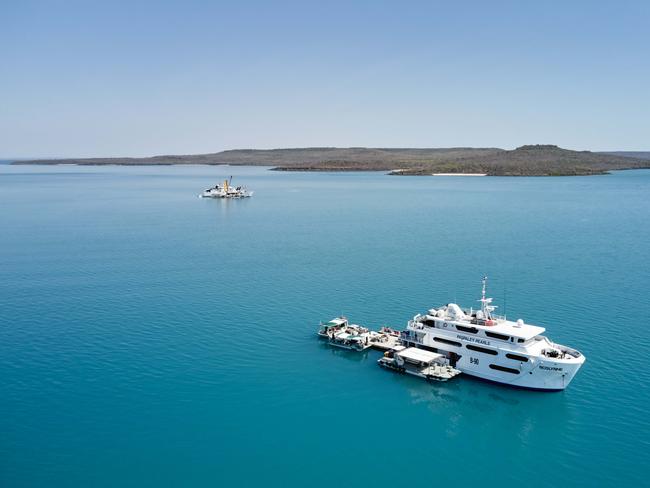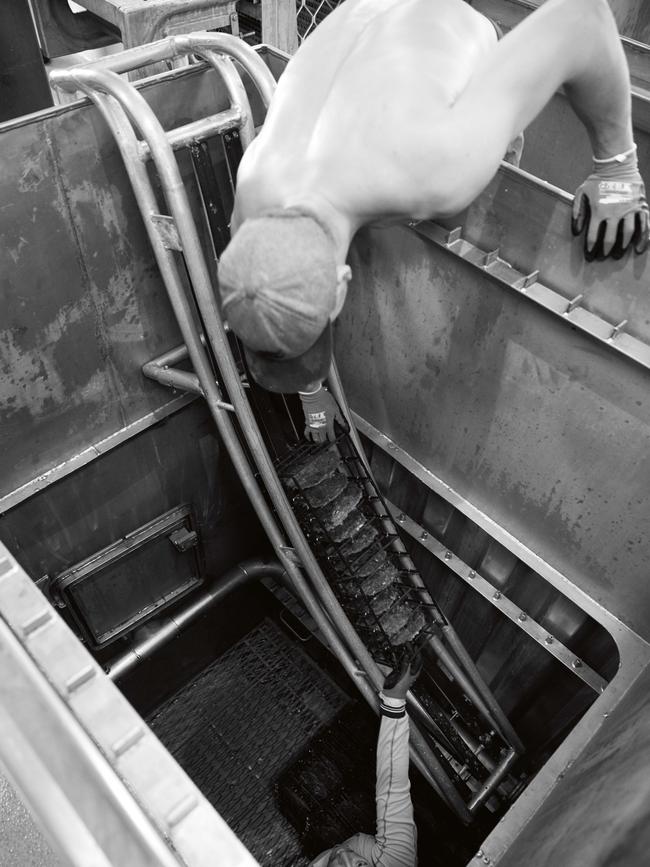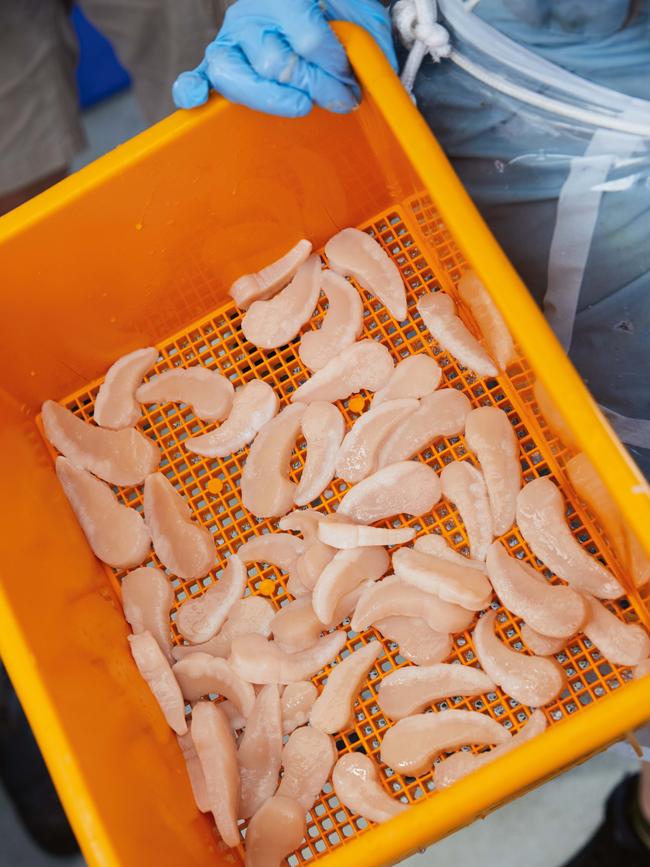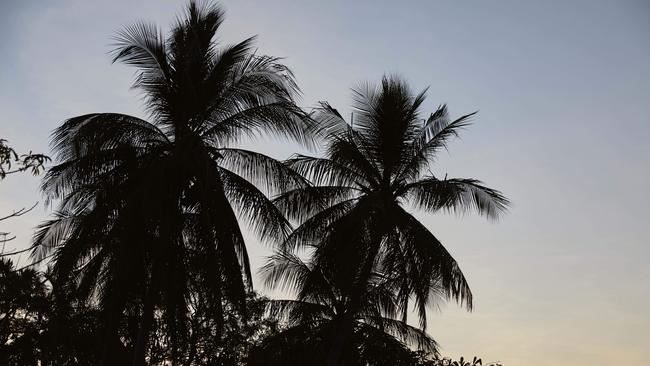Treasure trove: Paspaley
Only the most exquisite pearls, chosen by the client from Paspaley’s collection, will go into its inspired new custom-made strands.

The rugged coastline at the top of Western Australia, with its turquoise waters set against a deep red terrain, is home to one of Australia’s most exquisite gems: the pearl. It’s also the birthplace of one of the country’s greatest pearling families, the Paspaleys. The historic pearling family has come a long way from its humble beginnings. Founder Nicholas Paspaley Snr started on the boats in the Pilbara region at the age of 14 in 1928 and this month the company launched its most inimitable and luxurious creation, Rhapsody strands.
The made-to-order jewellery, priced between $68,000 and $595,600, features a 2.3m to 2.4m long strand, with each strand created never to be repeated. The customer will be invited to help select the pearls for their own Rhapsody strand.
Creative director Christine Slater, granddaughter of the company’s founder, says that the pearls used in the new strands will come from 10 and 30 years’ worth of stock from pearl harvesting, adding that it will take around six months to finalise a layout for each custom-made strand.


“I like the fact I was able to experiment at a high-end level,” she says. “It’s a rare opportunity that someone gets to do that.” Slater says the idea for the new boutique collection struck her when she saw a friend trying different looks with a long opera strand of pearls. “I could tell she wanted more freedom to express herself, not just through fashion but with jewellery. I could see she enjoyed being part of that creative process, and that got me thinking.
“We have tried to allow the client to have fun with one piece of jewellery. This is serious jewellery; it’s a massive investment for somebody, but it doesn’t mean you can’t have fun with it. It allows the customer to become part of the creative process.”
The Rhapsody strand can be draped as one long, unbroken line or detached into bracelets or shorter necklaces, and customers can select from Circle and Round Australian south sea pearls or Keshi pearls. Paspaley has been collecting Keshi pearls for 50 years, reserving the rarest from every harvest for the eventual launch of this new, bespoke piece.
“We need to get permission from the board to use this type of Keshi pearl as the board was specific that it didn’t want them going into simple everyday wear,” Slater says. [The pearls] are too rare and need to be in designs that reflect their importance.”
Slater, who studied fine arts and jewellery design, says she has always been interested in creativity but she had to work her way up to the top role and, along with all her cousins, that meant starting on the pearling boats.


“My cousins and I all grew up going out on the ships. It’s in our blood – we all love it,” she says. “I think particularly the time we spent at sea has given us great passion for the industry and product. All of my generation are involved in the company in senior roles today. Because the company is so diverse – we have aviation, rural, retail, wholesale – we’re all able to have different roles and not be on top of each other.”
Slater says the global success the diverse company now enjoys took generations to achieve. Her family’s pearling story was born when her grandfather Nicholas, a war refugee from Greece, arrived in a small Western Australian town, Cossack, during World War I. The most important industry along that coast when he arrived, with his parents and siblings via a boat, was pearling. When Nicholas’s father died when he was 14, he was forced to step up and support his family by joining the pearling industry and by the age of 17 he had bought his own pearl lugger, marking the official start of Paspaley.
“My granddad was known as the greatest pearler during his lifetime,” Slater says. Natural pearls were too rare to sustain an industry on their own during those years, so the pearlers sought the shell, mother of pearl, which they then sold for use in items such as buttons. But after World War II plastic buttons were invented and the industry crashed, forcing many pearlers to walk off and leave their boats to rot on the beach.
“It was then that my grandfather and some others banded together and tried to come up with a way to cultivate pearls,” Slater says. “He ran a number of other jobs in town, such as taxi driving, and everything he earned went straight back into his pearling business and eventually it paid off.”

In the early years of cultivating its own pearls the company faced a significant mortality problem, with a high number of the shells dying. It was not until the 1980s when Paspaley started to become a financial success that Nicholas Paspaley Jr worked out a way to drastically reduce the mortality of the shell it was operating on.
Slater says it was then that, instead of only 20 per cent of the shells surviving, 90 per cent survived. A natural pearl is formed when something, it could be a parasite or piece of shell or sand, gets into the shell and irritates the mussel. The mussel will try to expel this irritant and if it can’t, it will start secreting mother of pearl around the object inside, forming a pearl. Paspaley is the last company still diving for the wild pearl shell and the last commercial source of natural pearls.
Slater explains that to form a cultured pearl, a ball made out of shell from the Mississippi River is inserted into the shells they have collected.

“We put that shell into the water and look after it every day of the year,” she says. “One year later we’ll know if it has accepted it and then it’s another year later before we take the pearl out. A cultured pearl is similar to IVF – it’s the initial insemination process that makes the difference and from then on it’s up to nature if the shell accepts it or not.”
The stunning pearl shell used by Paspaley, a Pinctada maxima, is from Eighty Mile Beach – halfway between Broome and Port Hedland in Western Australia’s Kimberley region. The pearl this shell grows, according to Slater, has the highest lustre, the largest pearls and the rarest, resulting in the three most important factors in a gem: beauty, size and rarity.
Slater says there is a lack of understanding about the company’s pearls, an old-fashioned perception that doesn’t match the standard of a Paspaley pearl.
“Our pearls are large, full of life and have so much character to them,” she says. “They are unlike any other kind of pearl. They have a light and lustre that reflects light onto your complexion. It makes a woman more beautiful.”

Paspaley wholesales to leading jewellers around the world, with 98 per cent of its pearls sold into that market and the remaining 2 per cent used for its own designs, sold in its retail stores.
Slater says trying to find new ways to wear pearls inspires her, adding that she is not interested in creating jewellery that is not going to be worn. “Many of our pieces are adaptable and can be worn in different ways – wrapped, stacked, layered. You can wear the same piece on the beach and then out for the evening. That’s the beauty of pearls; they are elegant but there is a natural appeal to them.”

To join the conversation, please log in. Don't have an account? Register
Join the conversation, you are commenting as Logout